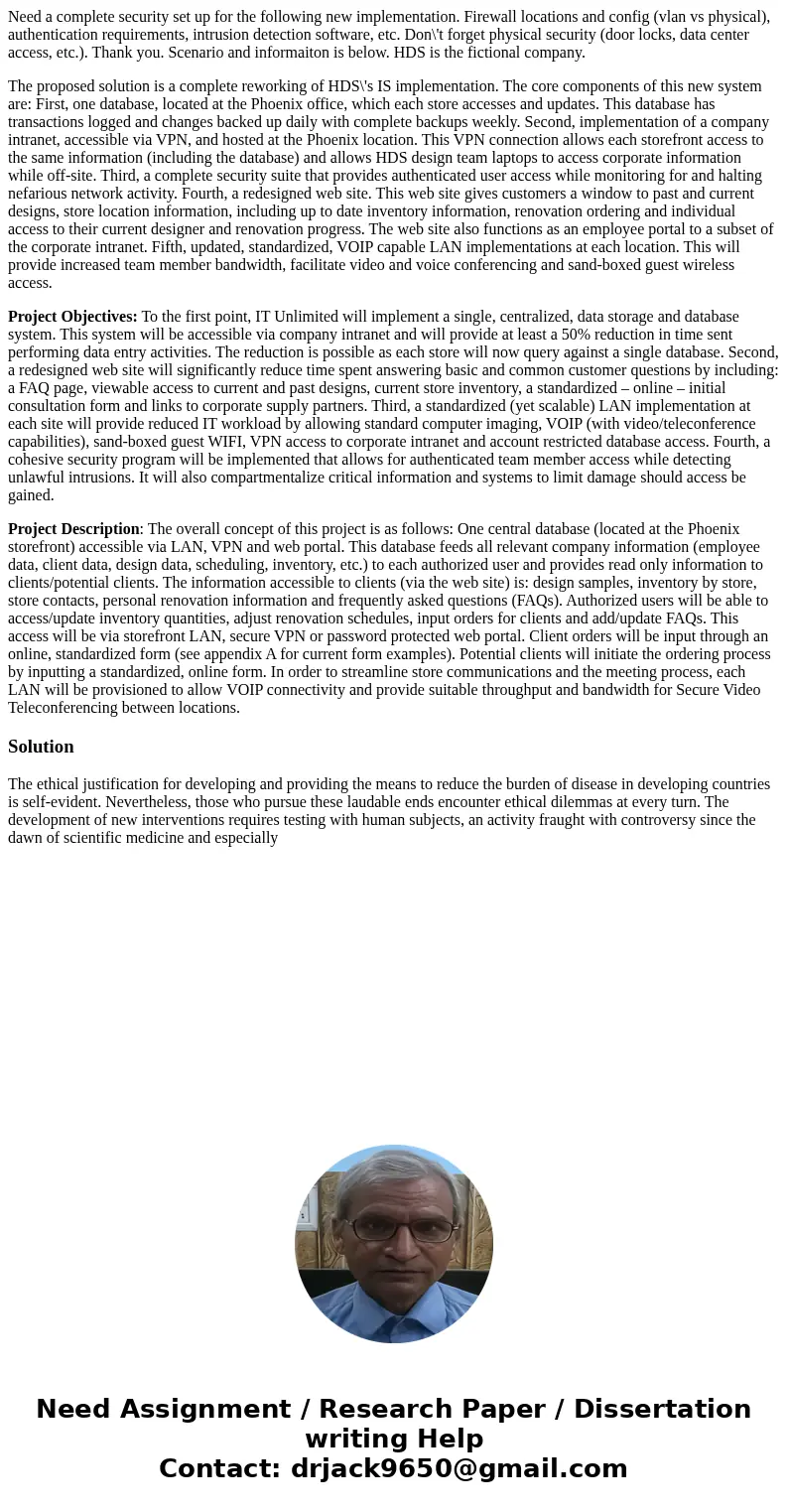Need a complete security set up for the following new implem
Need a complete security set up for the following new implementation. Firewall locations and config (vlan vs physical), authentication requirements, intrusion detection software, etc. Don\'t forget physical security (door locks, data center access, etc.). Thank you. Scenario and informaiton is below. HDS is the fictional company.
The proposed solution is a complete reworking of HDS\'s IS implementation. The core components of this new system are: First, one database, located at the Phoenix office, which each store accesses and updates. This database has transactions logged and changes backed up daily with complete backups weekly. Second, implementation of a company intranet, accessible via VPN, and hosted at the Phoenix location. This VPN connection allows each storefront access to the same information (including the database) and allows HDS design team laptops to access corporate information while off-site. Third, a complete security suite that provides authenticated user access while monitoring for and halting nefarious network activity. Fourth, a redesigned web site. This web site gives customers a window to past and current designs, store location information, including up to date inventory information, renovation ordering and individual access to their current designer and renovation progress. The web site also functions as an employee portal to a subset of the corporate intranet. Fifth, updated, standardized, VOIP capable LAN implementations at each location. This will provide increased team member bandwidth, facilitate video and voice conferencing and sand-boxed guest wireless access.
Project Objectives: To the first point, IT Unlimited will implement a single, centralized, data storage and database system. This system will be accessible via company intranet and will provide at least a 50% reduction in time sent performing data entry activities. The reduction is possible as each store will now query against a single database. Second, a redesigned web site will significantly reduce time spent answering basic and common customer questions by including: a FAQ page, viewable access to current and past designs, current store inventory, a standardized – online – initial consultation form and links to corporate supply partners. Third, a standardized (yet scalable) LAN implementation at each site will provide reduced IT workload by allowing standard computer imaging, VOIP (with video/teleconference capabilities), sand-boxed guest WIFI, VPN access to corporate intranet and account restricted database access. Fourth, a cohesive security program will be implemented that allows for authenticated team member access while detecting unlawful intrusions. It will also compartmentalize critical information and systems to limit damage should access be gained.
Project Description: The overall concept of this project is as follows: One central database (located at the Phoenix storefront) accessible via LAN, VPN and web portal. This database feeds all relevant company information (employee data, client data, design data, scheduling, inventory, etc.) to each authorized user and provides read only information to clients/potential clients. The information accessible to clients (via the web site) is: design samples, inventory by store, store contacts, personal renovation information and frequently asked questions (FAQs). Authorized users will be able to access/update inventory quantities, adjust renovation schedules, input orders for clients and add/update FAQs. This access will be via storefront LAN, secure VPN or password protected web portal. Client orders will be input through an online, standardized form (see appendix A for current form examples). Potential clients will initiate the ordering process by inputting a standardized, online form. In order to streamline store communications and the meeting process, each LAN will be provisioned to allow VOIP connectivity and provide suitable throughput and bandwidth for Secure Video Teleconferencing between locations.
Solution
The ethical justification for developing and providing the means to reduce the burden of disease in developing countries is self-evident. Nevertheless, those who pursue these laudable ends encounter ethical dilemmas at every turn. The development of new interventions requires testing with human subjects, an activity fraught with controversy since the dawn of scientific medicine and especially

 Homework Sourse
Homework Sourse